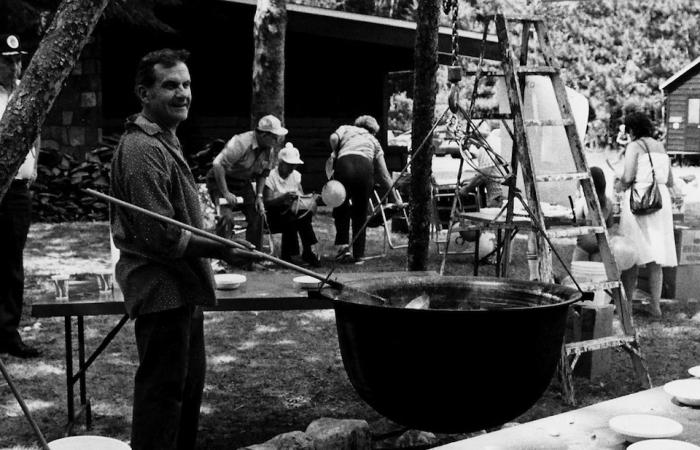I have a memory of my dad making horseradish. It was a spring morning and, armed with nothing but a handkerchief over his nose and mouth, he stood outside at a picnic table and grated a long horseradish root into a bowl. As tears rolled down his cheeks, I could see that he was in his glory. “Just wait, Donna,” he said. “This is going to be the best horseradish yet. My eyes can tell!”
I never went near the stuff after that.
A few years ago, however, I finally decided to try this condiment that people either love or hate. I was half Ukrainian, right?
If I wanted to claim my heritage, I needed to embrace horseradish along with all of the other Ukrainian foods I enjoyed: perogies, cabbage rolls, headcheese…
I must admit that I was pleasantly surprised. Sure, it had a bite to it, but underneath that zesty sting was a subtle sweet flavour that complimented my roast beef quite nicely. It made me think of my baba and gido: rough and tough on the outside, but sweet and loving inside.
I decided to make some.
A friend of mine offered a couple of horseradish roots and warned me about where to plant them. “They will spread,” he said, “and take over everything.” I heeded his advice and planted them on the outside of the garden, next to the path where the rototiller keeps the garden separated from the lawn. “It should resign itself to growing in this small patch,” I said. “Good luck with that,” my friend replied with a sinister chuckle.
I planted it in late summer and, come spring, little green shoots appeared. The horseradish grew and by fall the leaves were almost two feet tall. I felt the leaves and pictured the long white roots below and remembered my friend describing his efforts to pull them from the ground. I would need a real hardy spade and strong stomping boots to get these suckers out.
But I waited.
You see, the best time to harvest horseradish is in the spring, just after the snow melts and you can see the dead leaves marking the spot where to dig. That’s when the radish is most potent, when it releases tear jerking fumes that turn the toughest Ukrainian into a blubbering fool. That’s the time when its flavour is at its peak and perfect to complement that roast beef Easter dinner.
My dad has childhood memories of digging up horseradish every spring, just barely after the ground began to thaw, armed with a spade and the promise of its strong odour clearing his sinuses. He told me that in a way, it was a compliment to be given the task, as only the strongest and hardiest would return to the house successful in pulling a long root from the earth’s frozen bosom.
Now it was my turn.
A day before Easter I cleared the snow away from the patch and dug. And dug, and dug, and dug until I struck gold. Pulling a foot long tuber from the ground,
I smiled. I could have sworn I heard Baba say to Gido, while they sat on a fluffy cloud and looked down at me: “Don’t you wish we could go to Donna’s place for Easter dinner?” and I whispered, “You’re welcome to come.”
After cleaning and peeling the root, I ground it up using a meat grinder. The second that radish hit the blades I realized why my dad did this part of the preparation outside. The house was immediately filled with an odour that no one but a seasoned horseradish maker could know or appreciate. Trust me when I say that my sinuses were cleared up for years.
After the radish was finely chopped, I added equal amounts of grated beets and a tablespoon of white vinegar then mixed the concoction. I spooned the contents into a jar, covered it with a lid, and put it in the refrigerator. Horseradish keeps well in the fridge for years, because, like my dad says, “Nothing, not even mold or bacteria, wants to go near it.” I’m not too sure about the truth behind his thinking, but it may have some merit.
So, there it is, how to make horseradish
in a few easy steps. Of course, if you don’t want to grow and harvest the root, you can always find it at your local grocery store. For me, I’m going to stick to growing and harvesting my own. It builds character.
This spring, just a couple days before Easter, I’ll be at it again. And after I put the bowl of horseradish on the table, I’m going to set out two extra chairs because I’m sure Baba and Gido will
be dropping by.


